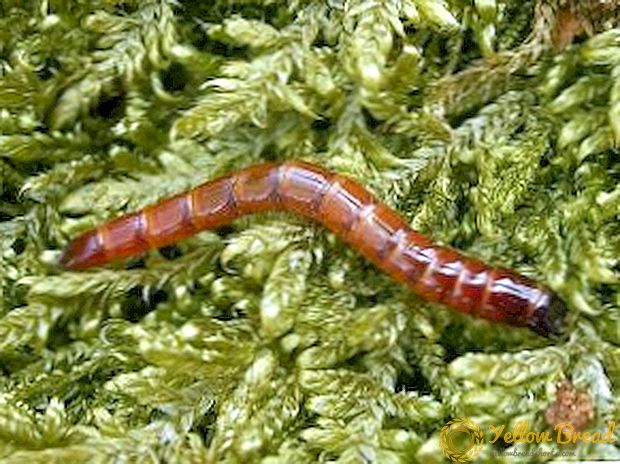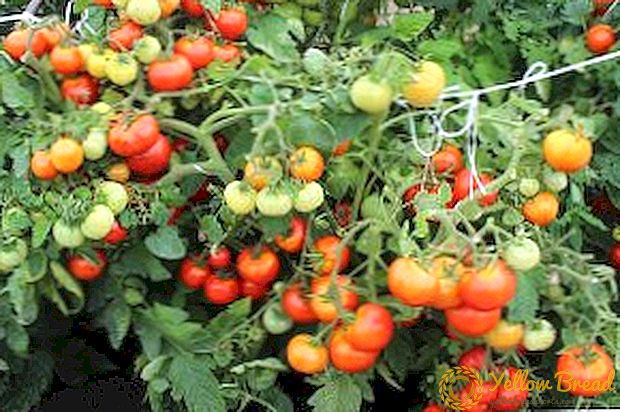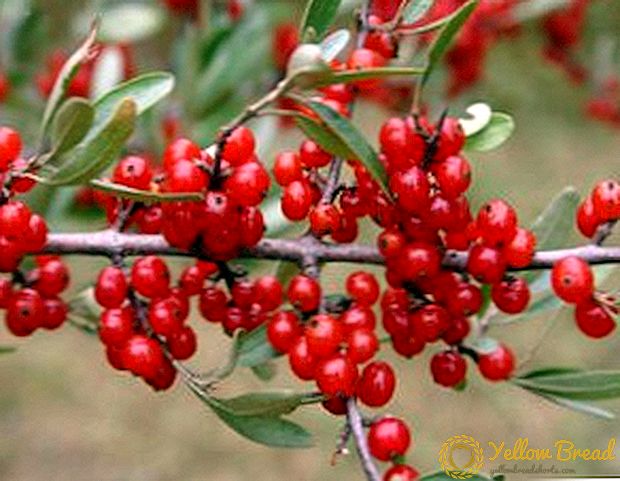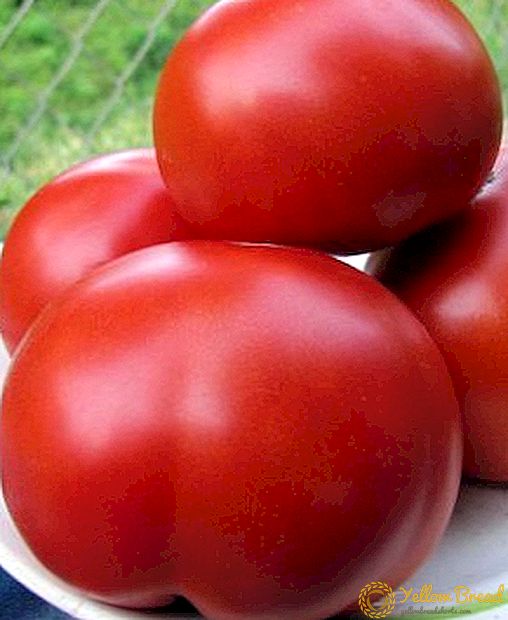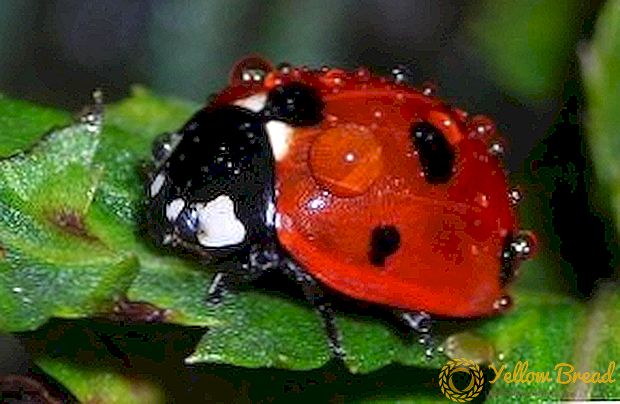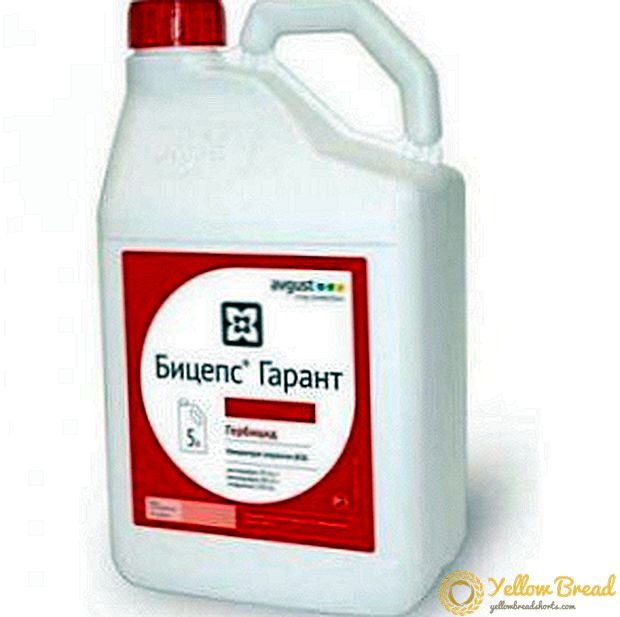 The modern economic market is literally teeming with a variety of agrochemicals, the purpose of which is to help gardeners and gardeners to protect their crops from the onslaught of pests (insects and weeds), disease, to increase the growth and yield of plantings. To simplify the selection a bit, consider the peculiarities of the composition and application of one of the most popular herbicides. firm "August" - Biceps Garant.
The modern economic market is literally teeming with a variety of agrochemicals, the purpose of which is to help gardeners and gardeners to protect their crops from the onslaught of pests (insects and weeds), disease, to increase the growth and yield of plantings. To simplify the selection a bit, consider the peculiarities of the composition and application of one of the most popular herbicides. firm "August" - Biceps Garant.
- Composition, release form, packaging
- Spectrum of affected weeds
- Drug benefits
- Operating principle
- How to prepare a working solution
- When and how to spray
- Action speed
- Period of protective action
- Shelf life
Composition, release form, packaging
This herbicide is the main and basic tool for weed control in fodder and sugar beet crops. The three-component composition of selective agrochemical promotes the spread of its spectrum of action on 40 species of annual dicotyledonous pest plants.

The active substance of the herbicide Biceps-Garant consists of three components:
- 70g / l dismedifam (bis-carbamates class);
- 90g / l of phenmedifam (bis-carbamates class);
- 110 g / l of ethofumezate (benzofuranylkanesulfonates class).

Spectrum of affected weeds
Like any agrochemical, this herbicide is designed for specific types of weeds. But its three-component structure allows you to expand the range of action and highlight aggressor plants with high, medium and low sensitivity to the components of the agrochemical.
- Among the weeds with high sensitivity the preparation includes schiritsa, wormwood, ragweed, some varieties of walking, Veronica, mountaineers, mustard godson and others


- To moderately sensitive Carry: blue cornflower, stinging nettle, three-part succession, solyanka, blood Rosyka, garden sow thistle, wormwood, chicken millet, chistets, green bristle, etc.


- Representatives of aggressor plants, such as sow thistle and thistle, some species of chamomile, creeping wheat grass, field foxtail, zigzag, and Teofast's pigtail low sensitivity to the components of the drug.


Drug benefits
Biceps garant possesses a number of positive properties:
- it is a basic means of protecting beet (fodder and sugar) plantings from clogging;
- perfectly managed with a huge number of varieties of cereal dicotyledonous annual weeds. The spectrum of action includes 40 species of pest plants.
- "induces" cleanliness in crops, which contributes to increasing crop yields;
- absorbed by the leaves of weeds, respectively, its components do not fall inside your crops through the roots;
- working solution is effective for 24 hours;
- safe for human life and honey insects, belongs to the 3rd class of toxicity (moderately dangerous).


Operating principle
Biceps garant is translaminar drug that is, it is absorbed by the leaves. It can also be absorbed by seedlings and roots of weed seeds. He quickly deals with weeds in the early stages of their life. Getting into the weeds, the active ingredient of the agrochemical violates the process of photosynthesis and the growth of meristem tissues, the exchange of useful substances, stops cell division. As a result, the weed is oppressed, becomes sluggish and dies.
How to prepare a working solution
To prepare a working solution for 1 hectare of crops in a tank with a capacity of 200 liters, take water and add the drug to it.It is very important to observe just such a sequence of actions, and not vice versa. The mixture must be stirred to a uniform consistency. 
When and how to spray
Spraying of beet plantations is recommended to be carried out at a temperature of + 10-25 ° C. In case of non-compliance with the temperature regime, the drug may have a phytotoxic effect on the beet itself: its growth will slow down, and the tips of the leaves will turn brown in color. Such symptoms disappear after a week, and will not affect the yield.
Spraying after rain or strong dew is also not recommended, since such treatment will not be effective.
 The dose of herbicide and the timing of its introduction is determined depending on culture and weed ages:
The dose of herbicide and the timing of its introduction is determined depending on culture and weed ages:- if there are 4 leaves on the crop, and the weeds are in the early stage of growth, it is necessary to carry out a one-time spraying using 3 liters of herbicide per 200 l of the working solution;
- in the case when 2-4 leaves appeared on the pest plants, it is advised to carry out spraying in two stages, with a calculation of 1.5 liters of agrochemical per 200 liters of working solution. The interval between the first and second treatment should be 7-14 days;
- To get rid of weeds in the phase of the cotyledon, it is necessary to spray three times a day, with an interval of 7-14 days between each. Consumption of the drug - 1 l / 200 l of working solution.

Doses are indicated per 1 hectare of crops! The herbicide is compatible with any other pesticides (for example, Miura, Hacker, Pilot). The two-liter dose of the drug is prohibited to use until 4 true leaves appear on the crop.

Action speed
Already in 4-8 days the action of the herbicide will declare itself: the weeds will become sluggish and oppressed. Their leaves will gradually begin to lighten, indicating that the process of photosynthesis is slowing down. Such a state slowly turns into chlorosis, which leads to the withering and drying of the aggressor plant. After 2-3 weeks, complete weed death occurs.
Period of protective action
The protective effect of this herbicide lasts until the emergence of a new wave of weeds. 
Shelf life
Subject to compliance with all standards of storage, the drug is suitable for 3 years from the date of manufacture. It is recommended to store it in special warehouses for pesticides. Packaging with agrochemical should be tightly closed and intact.







